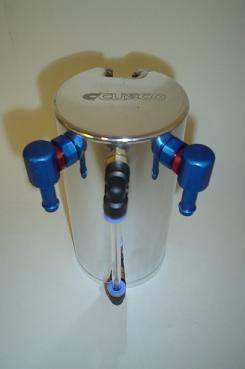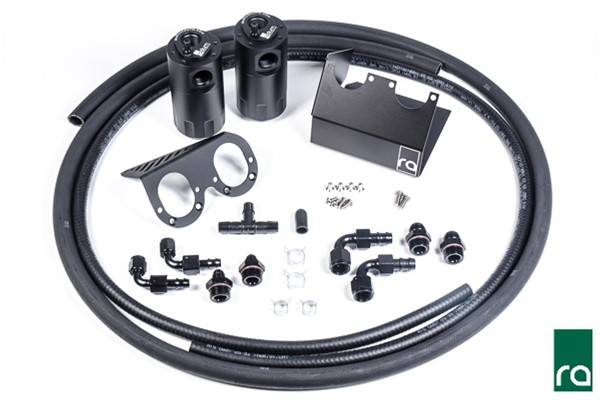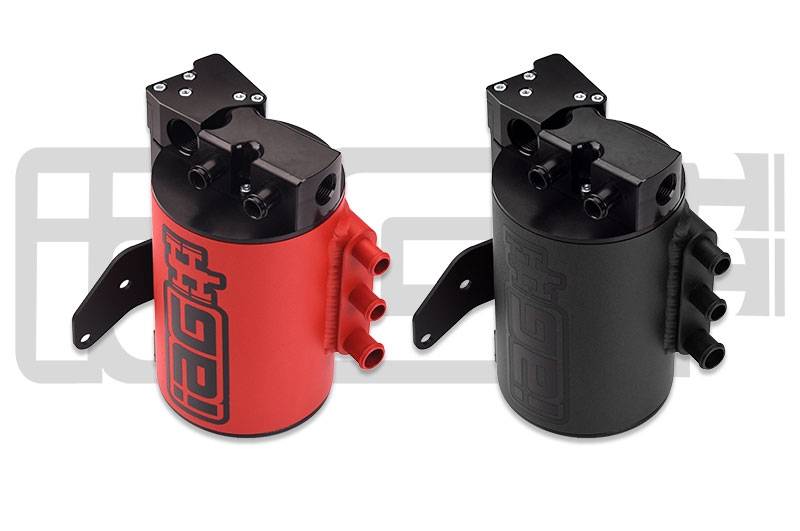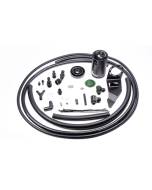We use cookies to make your experience better. To comply with the new e-Privacy directive, we need to ask for your consent to set the cookies. Learn more.
Do I need a Catch-Can or an AOS?

If you are looking to reduce or eliminate the oil and oil vapor that gets into your cars intake track, most likely you have seen both Catch Cans, and Air Oil Separators (AOS's) mentioned for this purpose. We have talked about the difference between the two in another blog, so for this post, we want to focus on how you would chose between the two, and how can you make sure that you are getting the part that will work best on your car.
The basis of this decision comes down to one key piece of information which is how much oil is your car using over a given period? If you are just driving the car on the street, the best timeframe to consider would be a single oil change interval. But if you are driving the car on the track, it would be best to look at both a single track session, or maybe a single track day.
The reason that you need this information to start is because, assuming your car is not leaking oil, the amount of oil that you are going through in given period will be what will be going into the catch-can or air oil separator.
If your car isn't using much if any oil, the benefit of a catch-can or AOS will be minimal at best. If you are using so little oil that you never need to add even a splash of oil between changes, then you will most likely be fine just leaving the car stock. On a new car, a car that is entirely stock, or a car that is just driven on the street, this would be normal.
If you are using a little bit of oil, say 1/4 to 1/2 a quart between oil changes, and you are seeing the beginning signs of oil in your cars intake or intercooler, then a catch-can may make the most sense for you. You would just have to make sure that the volume of the can is about double the amount of oil that you would expect to catch in a given period so there would be a minimal chance of it filling up before you would be able to empty it.
The advantage of a catch-can is they are generally less expensive than an AOS, and they are also generally much easier to install. The one thing that you have to make sure of is that it won't fill up because if it does, it can cause some significant issues. If the can does fill up, it will send a significant amount of oil into your cars inlet which can cause smoke, and at an extreme, if the can is full it will block your engine's ability to release crank-case pressure which can cause oil seals to fail, and potentially prevent your turbo from draining which can lead to turbo failure.
For many street cars, or cars that are close to stock, catch-cans make a lot of sense. One piece of advice that I would give is that if you are using a can with a single inlet and outlet, then you would only want to use that can to "T" into a single hose on your car. In the case of a WRX or STI, there are 2 separate lines that go from the crank-case to the inlet, and if you wanted to intercept both of them, you would want to use two cans. You can actually cause some issues to the function of the PCV system if you try to send two separate outlets from the crankcase to a single inlet of a catch can.
If you are tracking your car, and you are leaning towards a catch can, or a dual catch-can set-up, and you have made sure that you have enough volume of the cans that they won't fill up in a session or a single day, the other key consideration is does your oil sump have enough volume to lose your expected amount of oil and still function properly.
Using a Subaru as an example again, an STI has an oil capacity of roughly 4.5 quarts. If you have a modified track car, and you are seeing half a quart of oil go through the PCV system in a 20 minute track session, are you comfortable with your car only having 4 quarts of oil in the sump instead of the full 4.5 quarts?
If you are going through an amount of oil such that you are aren't seeing a catch can set-up that has enough capacity, or you don't like the idea of taking that much oil out of your engine's oil supply, then an Air Oil Separator would make more sense. This is because an AOS will return any oil captured to the oil pan, so you won't have to worry about draining the can, and your car's oil supply should be maintained at a constant level because that oil is being captured and returned.
Generally speaking, for cars that are using more than a quart of oil between changes (and you don't want to have to empty a catch can between oil changes), or modified cars that see some a reasonable amount of track time and full throttle use, an AOS will make more sense.
If you do want to go with an Air Oil Separator, it is important to pick a well designed one that has a descent capacity, and ideally is designed for your car so that it will properly intercept any and all PCV paths, but it will still let the crank-case breath properly. You will also want to consider the path of the drain from the AOS to make sure that it will be able to return any oil caught. If the drain of the AOS can't easily get back to your engine or the oil pan and it drains slowly or gets blocked, that can cause the same kind of issues that a full catch can would.
The last thing worth mentioning is that if you decide to go with an AOS because of the amount of oil your car is using, and you properly install the AOS but you are still going through a good amount of oil, this can be an indication that there may be a problem with your engine. The first thing you would want to do is to check the AOS plumbing and make sure that you aren't seeing signs of it sending oil to the inlet directly. If the return lines to the inlet are dry, and the AOS is working properly, the only other place that the oil could be going is past the rings. So if you run into this, it would be advisable to give the engine's overall health a serious look.
-Jon Cooley





